Welcome to North Sumatra, a province in northern Indonesia known for its diverse range of birdlife. From the mighty hornbills of the rainforest to the delicate sunbirds of the open savannahs, North Sumatra is a birdwatcher’s paradise.
With over 400 species of birds living in the area, ranging from migratory shorebirds to tropical parrots and raptors, North Sumatra has a wealth of avian life to explore.
From the natural beauty of the highlands to the fascinating culture of the people, there’s something for everyone in North Sumatra. So come and explore the wonders of the birds of North Sumatra.
1. Little Egret
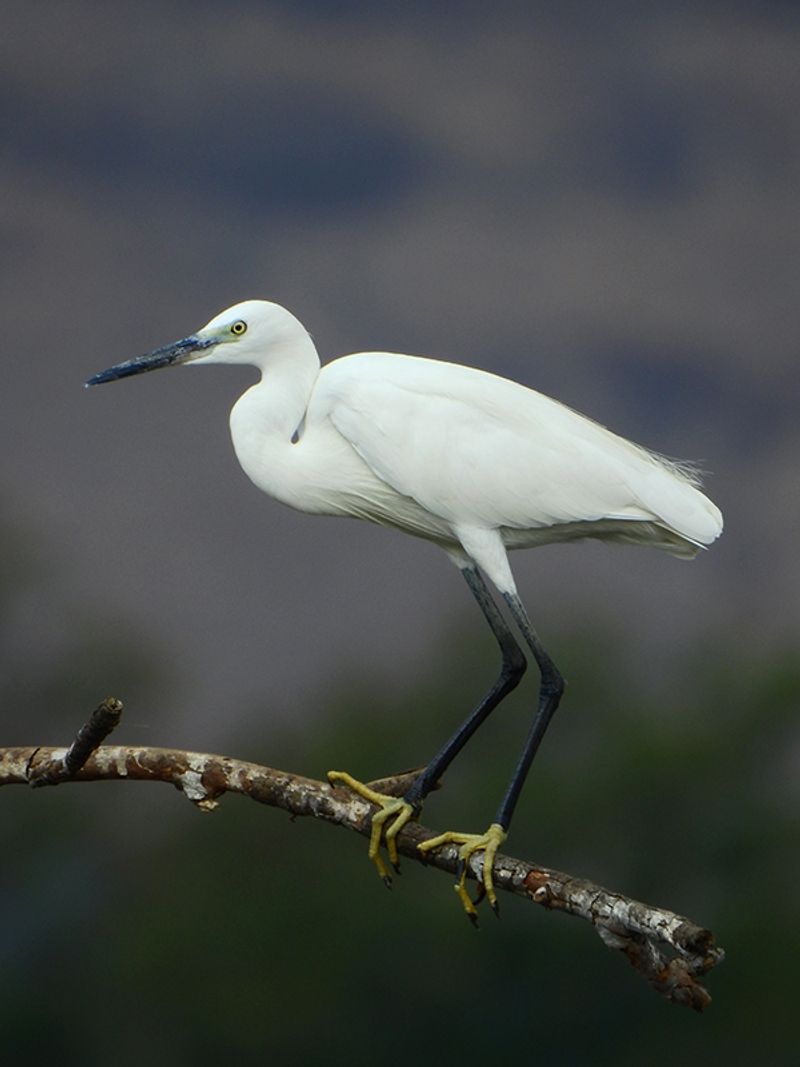
The little egret is a species of small heron that belongs to the family Ardeidae. Its distinctive features include a white body, a slender black beak, and long black legs. For the western race of the species, yellow feet are also present.
In terms of its diet, the little egret is predominantly an aquatic bird, meaning that it mostly forages for food in shallow waters. However, it is also capable of finding sustenance on land, where it consumes a variety of small creatures.
| Kingdom | Animalia |
| Phylum | Chordata |
| Class | Aves |
| Order | Pelecaniformes |
| Family | Ardeidae |
| Genus | Egretta |
| Species | E. garzetta |
2. Javan Pond Heron

The Javan pond heron is a species of wading bird from the heron family that is found in Southeast Asia. This species of heron is typically 45 cm in length and has white wings, a yellow bill with a black tip, yellow eyes, and legs.
Its diet consists of insects, fish, and crabs which it finds in shallow freshwater and saltwater wetlands. This species of heron is quite unique in its coloration and diet. Its white wings are a distinguishing feature and its yellow bill and black tip make it easily identifiable.
Its yellow eyes and legs further add to its distinctiveness. Additionally, its diet is varied with the inclusion of insects, fish, and crabs. The Javan pond heron is an important species to its environment.
It helps to maintain the balance of the ecosystem by consuming insects, fish, and crabs, which are all sources of food for other animals.
In addition, its presence in the wetlands helps to attract other wildlife to the area, thus increasing the biodiversity of the habitat. The Javan pond heron is an important species that is valuable to its environment.
Its unique coloration and diet make it a distinctive member of the heron family. Its presence in the wetlands helps to maintain the balance of the ecosystem and attract other wildlife to the area.
This species is an important part of the Southeast Asian ecosystem and should be protected for future generations.
| Kingdom | Animalia |
| Phylum | Chordata |
| Class | Aves |
| Order | Pelecaniformes |
| Family | Ardeidae |
| Genus | Ardeola |
| Species | A. speciosa |
3. Striated Heron
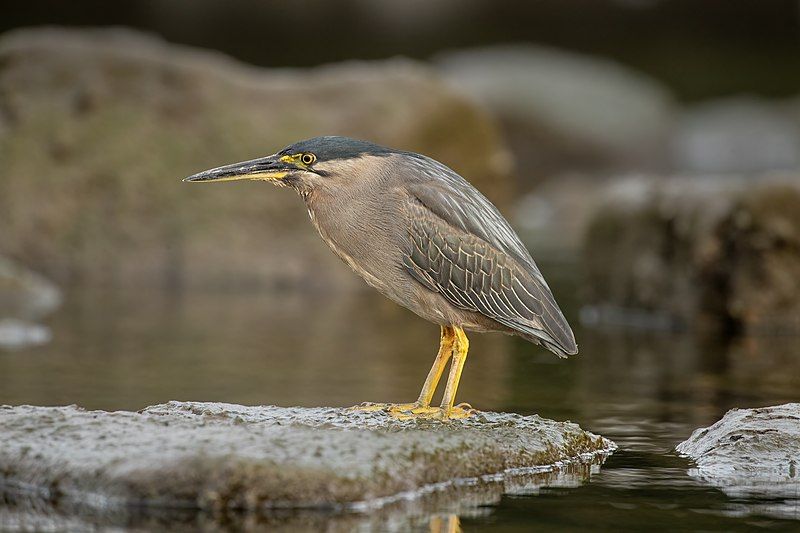
The Striated Heron is a small bird that stands at a mere 44 cm tall. It is known by several names, including Mangrove Heron, Little Green Heron, and Green-backed Heron. This species is mostly sedentary, meaning that they do not migrate or move around much.
They are known to have some interesting behavioral traits that can be observed in the wild. For example, they will often stand motionless in shallow water for long periods of time, waiting for prey such as fish or insects to pass by.
They may also use their long necks to probe the mud for aquatic prey. Additionally, they are very social birds, and can often be found in flocks. This behavior helps them stay safe from predators.
All in all, the Striated Heron is a unique bird that is both interesting and beautiful.
| Kingdom | Animalia |
| Phylum | Chordata |
| Class | Aves |
| Order | Pelecaniformes |
| Family | Ardeidae |
| Genus | Butorides |
| Species | B. striata |
4. Crested Serpent Eagle
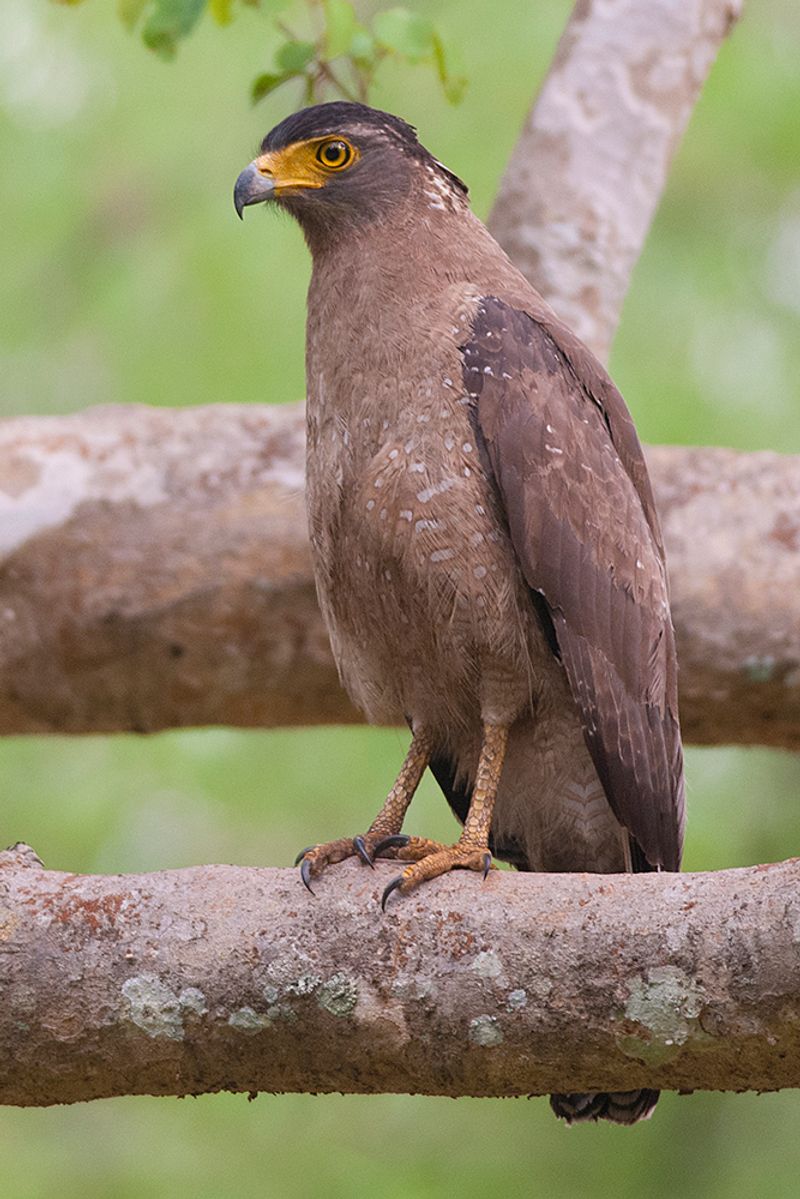
The crested serpent eagle is an impressive species of bird of prey that is found in tropical areas of Asia. It is a medium-sized raptor, typically measuring between 16 and 21 inches in length.
This majestic bird has a large wingspan that can reach up to 4 feet and is characterized by its magnificent white head, neck, and breast, along with its distinctive crest. The crested serpent eagle has a brown back and tail, and its wings are barred with black and white stripes.
The crested serpent eagle is usually found in forested habitats, such as tropical rainforests, woodlands, and scrublands. They prefer to perch on tall trees and can be found both alone or in small groups.
This raptor feeds mainly on small mammals, reptiles, birds, and amphibians, which it hunts by swooping down silently from its high perch. The crested serpent eagle is an important species for controlling the populations of small mammals and other prey species.
They are also an important indicator species, as their presence in an area can be an indication of the health of forested habitats. As such, it is important to protect their habitats in order to ensure the survival of this species for future generations.
| Kingdom | Animalia |
| Phylum | Chordata |
| Class | Aves |
| Order | Accipitriformes |
| Family | Accipitridae |
| Genus | Spilornis |
| Species | S. cheela |
5. Brahminy kite
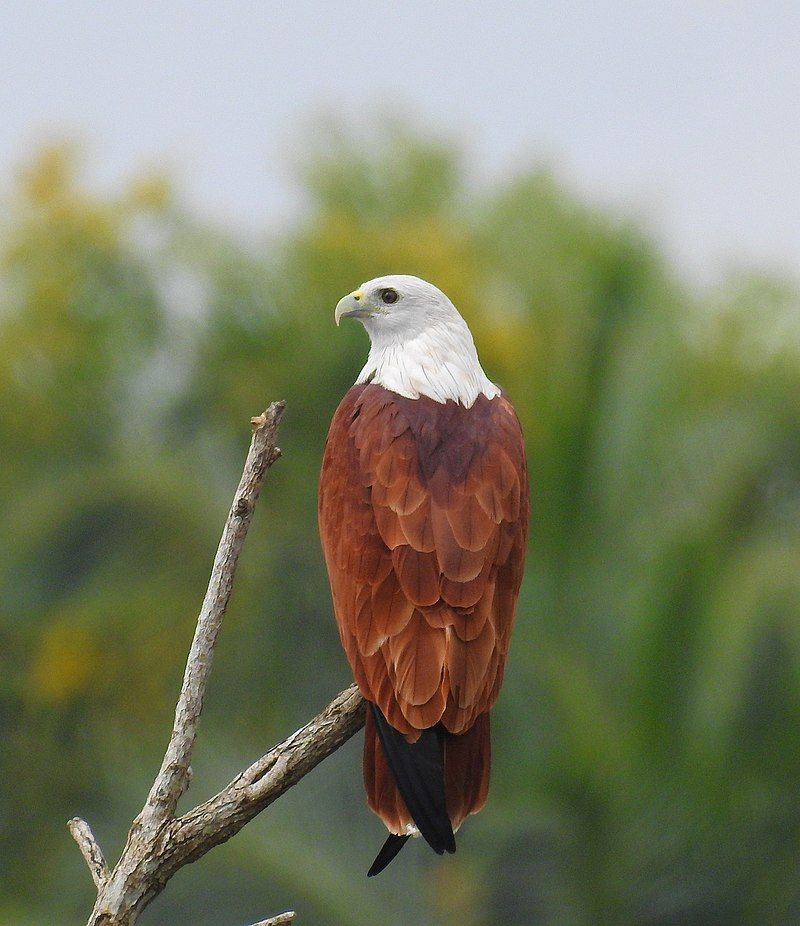
The brahminy kite is a medium-sized bird of prey in the family Accipitridae, which is composed of diurnal raptors such as eagles, buzzards, and harriers. It is also known as the red-backed sea eagle in Australia.
Brahminy kites have a wide range, found in the Indian subcontinent, Southeast Asia, and Australia. These birds typically have a white head, neck, and breast, as well as brown wings and back. They have a hooked bill and yellow feet.
Brahminy kites have a strong, direct flight, usually flying low over the ground. They feed mainly on fish but also take other prey, such as insects, small mammals, and carrion. Brahminy kites usually nest in tall trees or on cliff faces.
They are monogamous and form long-term pair bonds. The female usually lays two eggs, which are incubated for about a month. Both parents take part in the raising of the young. Overall, the Brahminy kite is an impressive bird of prey, found in a wide range of habitats.
They are an important part of the ecosystems where they live, providing vital services such as controlling the populations of certain species of prey and scavenging.
| Kingdom | Animalia |
| Phylum | Chordata |
| Class | Aves |
| Order | Accipitriformes |
| Family | Accipitridae |
| Genus | Haliastur |
| Species | H. indus |
6. Black-crowned Night Heron
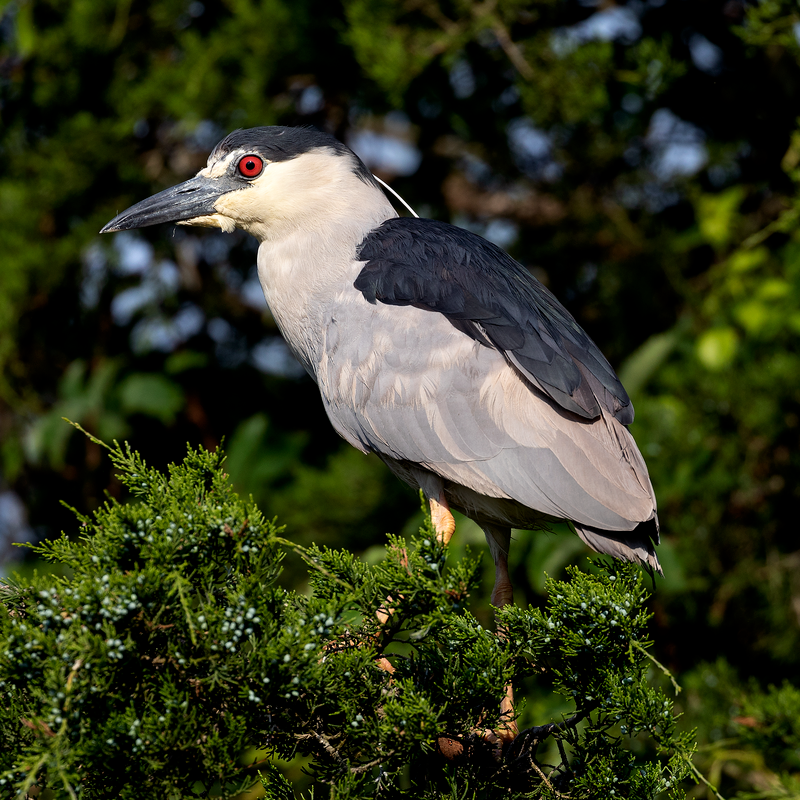
The black-crowned night-heron is a medium-sized heron that can be found in many different parts of the world, including Europe, Asia, and both North and South America.
It is commonly referred to as the night heron in Eurasia and is easily recognized by its distinctive black crown. The heron is a medium-sized bird that can grow up to 24 inches in length, with a wingspan of approximately 34 inches.
They have a gray-brown and white spotted plumage and a white underside.
The black crown is a distinguishing feature from other herons and can be seen when the heron is in flight. The black-crowned night heron is a solitary bird that can be found in different habitats, from wetlands to coastal areas.
They usually can be seen in the early morning and late evening, as they are most active during these times.
They feed mainly on aquatic animals such as fish, crustaceans, and amphibians, as well as small mammals and insects. The black-crowned night heron is quite an adaptable species and has been seen in many different places around the world.
They can be found in wetlands, estuaries, and mangroves, as well as in urban areas.
They are also known to migrate to warmer climates during the winter months. Overall, the black-crowned night heron is an interesting species of bird that can be found in many different parts of the world.
They are easily recognized by their distinctive black crowns and are active during the early morning and late evening hours. They feed mainly on aquatic animals and are quite adaptable, as they can be found in both natural and urban environments.
| Kingdom | Animalia |
| Phylum | Chordata |
| Class | Aves |
| Order | Pelecaniformes |
| Family | Ardeidae |
| Genus | Nycticorax |
| Species | N. nycticorax |
7. Great Egret
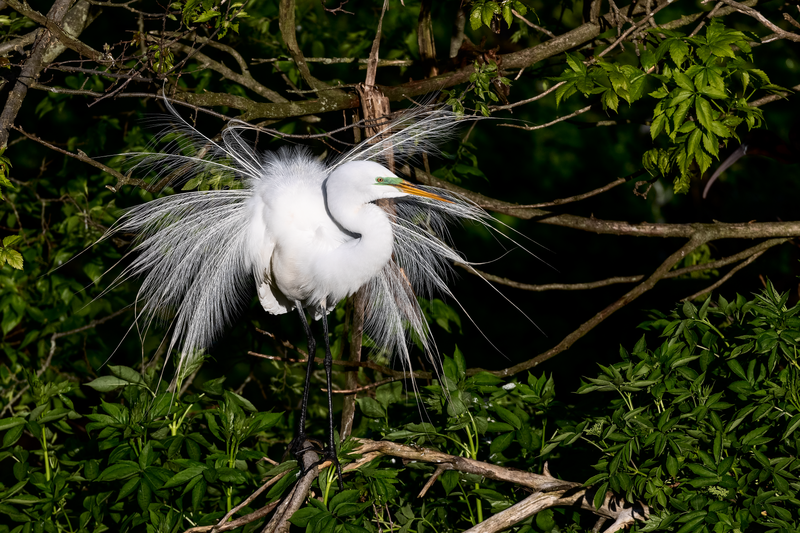
The great egret is a large, widely distributed bird species found in many different parts of the world.
It is also known as the common egret, large egret, great white egret, or great white heron, with four distinct subspecies existing in Asia, Africa, the Americas, and southern Europe.
As of late, the great egret has been seen in more northern regions of Europe, indicating that its range is expanding. The great egret is a majestic creature with a long, slender neck and pure white feathers. It has a black, dagger-like bill, and yellow feet.
The adult great egret stands at approximately three feet tall and has a wingspan of around five feet. The great egret is an opportunistic hunter that mainly feeds on insects, amphibians, and fish.
It typically hunts in shallow water, although it has been known to feed in fields as well. In addition to its hunting skills, the great egret is also an excellent fisher, often using its long, sharp bill to snatch prey from the water.
In recent years, the great egret has become an increasingly popular species in many parts of the world. It is widely admired for its beauty and grace and is a common sight in wetlands, marshes, and other water habitats.
Thanks to its expanding range and increasing population, the great egret is likely to remain a beloved bird species for many years to come.
| Kingdom | Animalia |
| Phylum | Chordata |
| Class | Aves |
| Order | Pelecaniformes |
| Family | Ardeidae |
| Genus | Ardea |
| Species | A. alba |
8. Pacific Reef Heron
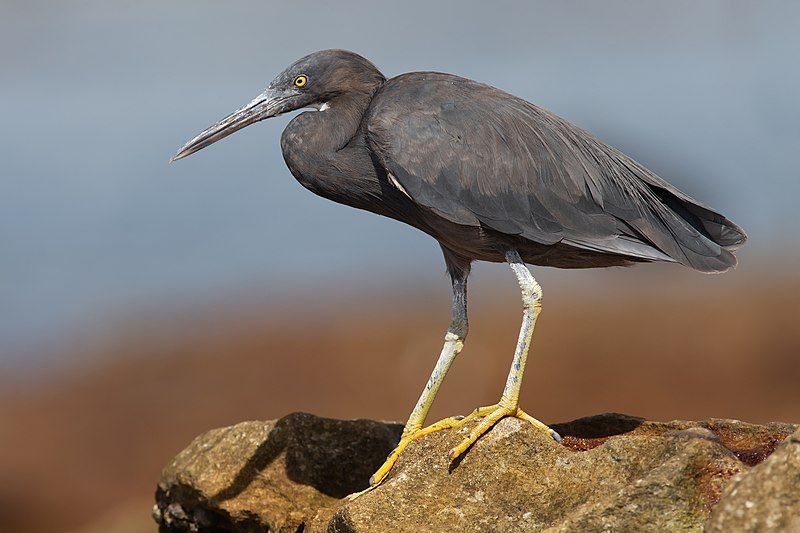
The Pacific reef heron is a species of heron found in southern Asia and Oceania. It is also known as the eastern reef heron or eastern reef egret. This species of heron has two different color morphs, a slaty grey one and a pure white one.
The two sexes of this species have a similar appearance, meaning they are not easily distinguished from one another when it comes to coloration. The Pacific reef heron is a medium-sized heron with a slender neck and a slightly curved bill.
They can be found wading in shallow waters, preying on small fish, crustaceans, and mollusks. They breed in large colonies, often on small islands, and are very vocal when nesting. When threatened, this species will stretch out its neck and raise its crest in a defensive stance.
The Pacific reef heron is an important species for local ecosystems and provides an important source of food for many other species.
| Kingdom | Animalia |
| Phylum | Chordata |
| Class | Aves |
| Order | Pelecaniformes |
| Family | Ardeidae |
| Genus | Egretta |
| Species | E. sacra |
9. Purple Heron
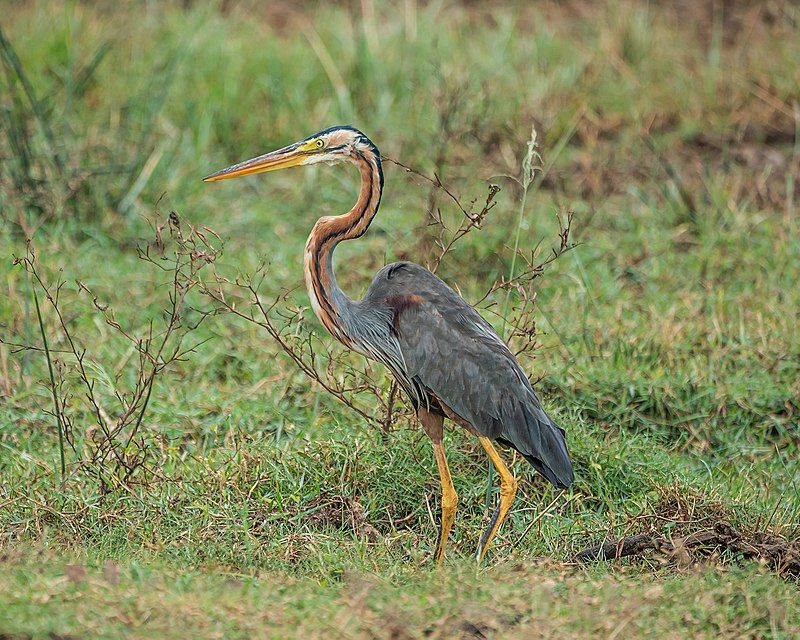
The purple heron is a species of wading bird that belongs to the Ardeidae family. It is widespread and is found in many parts of the world, including Africa, Europe, and Asia.
Its scientific name, Ardea purpureus, is derived from Latin, with “Ardea” meaning heron, and “purpureus” meaning colored purple, referring to its distinctive plumage. The purple heron is known for its elusive nature and is not easily spotted in the wild.
It typically lives in remote habitats, such as marshes, swamps, and wetlands.
During the breeding season, it builds large nests in trees, usually near water bodies, where it can easily access its prey. Purple herons feed on a variety of small animals, including fish, frogs, insects, and small rodents.
It is mainly a solitary species but will form small colonies during the breeding season.
Its diet consists of small fish, amphibians, and invertebrates, which it catches with its long, sharp bill. The purple heron is an important species in its ecosystem, as it helps to regulate the populations of its prey.
It is also important in the maintenance of wetland habitats, as it helps to keep the water clean and healthy. Unfortunately, the species is threatened by habitat loss and fragmentation, which is why it is listed as a vulnerable species on the IUCN Red List.
| Kingdom | Animalia |
| Phylum | Chordata |
| Class | Aves |
| Order | Pelecaniformes |
| Family | Ardeidae |
| Genus | Ardea |
| Species | A. purpurea |
10. Black Eagle
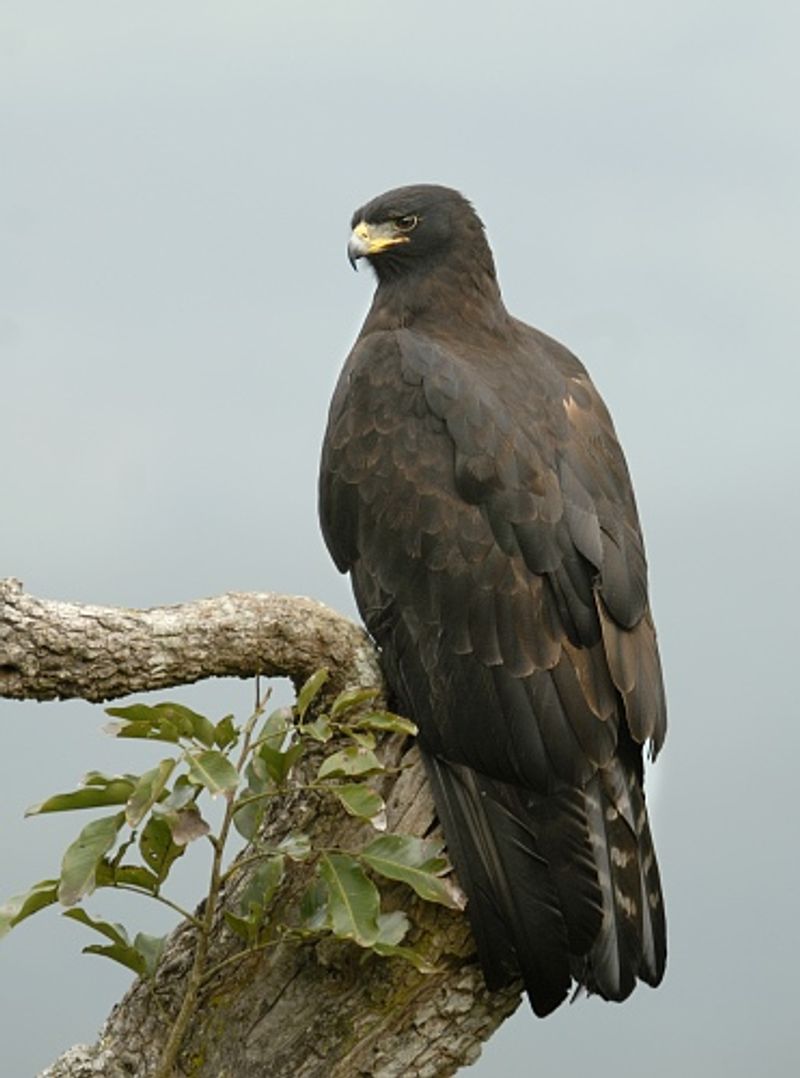
The black eagle is an impressive bird of prey, belonging to the family Accipitridae. It is the sole member of the genus Ictinaetus, which can be found soaring over forests in tropical and subtropical regions of South and Southeast Asia, as well as southeastern China.
Its impressive wingspan allows it to effortlessly glide over the hilly terrain of these regions, using its keen eyesight to spot potential prey. Black eagles typically make their homes in tall trees, where they can scan the surrounding area for food.
They feed primarily on small mammals, reptiles, and birds, as well as some insects and fish.
They have been known to steal food from other birds, and have even been observed preying on larger animals such as monkeys. The black eagle has a distinctive appearance, with all-black plumage and yellow legs and feet.
They can reach up to three feet in length and have a wingspan of up to six feet. They are powerful and agile in flight and can reach speeds of up to 40 miles per hour during pursuit of prey. The black eagle has long been admired for its strength, courage, and majestic beauty.
It is an important symbol in many cultures and has been venerated by some indigenous peoples of the regions it inhabits. Conservationists are concerned about the declining population of this species due to deforestation and environmental degradation.
As a result, the black eagle is a protected species in many countries.
| Kingdom | Animalia |
| Phylum | Chordata |
| Class | Aves |
| Order | Accipitriformes |
| Family | Accipitridae |
| Genus | Ictinaetus |
| Species | I. malaiensis |
11. Black-winged Kite
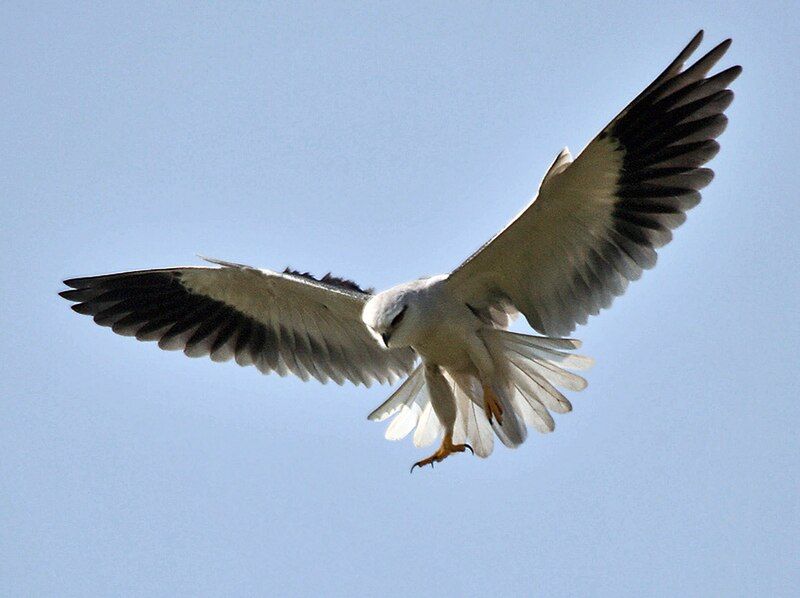
The black-winged kite, also known as the black-shouldered kite, is a small bird of prey in the family Accipitridae. It is diurnal, which means it is active during the day.
The black-winged kite is distinguished from other birds of prey by its unique habit of hovering over open grasslands, similar to the much smaller kestrels. This behavior makes it easily recognizable in its habitat.
The black-winged kite can be found in many parts of the world, including Africa, Europe, and Asia. Its diet consists mainly of small rodents and insects, which it catches from mid-air.
It has a distinctive light grey color and black wings, which give it its name, and a white underbelly. The black-winged kite is an important part of the ecosystem as it helps to maintain the balance of prey and predator species in its environment.
| Kingdom | Animalia |
| Phylum | Chordata |
| Class | Aves |
| Order | Accipitriformes |
| Family | Accipitridae |
| Genus | Elanus |
| Species | E. caeruleus |
12. Spizaetus
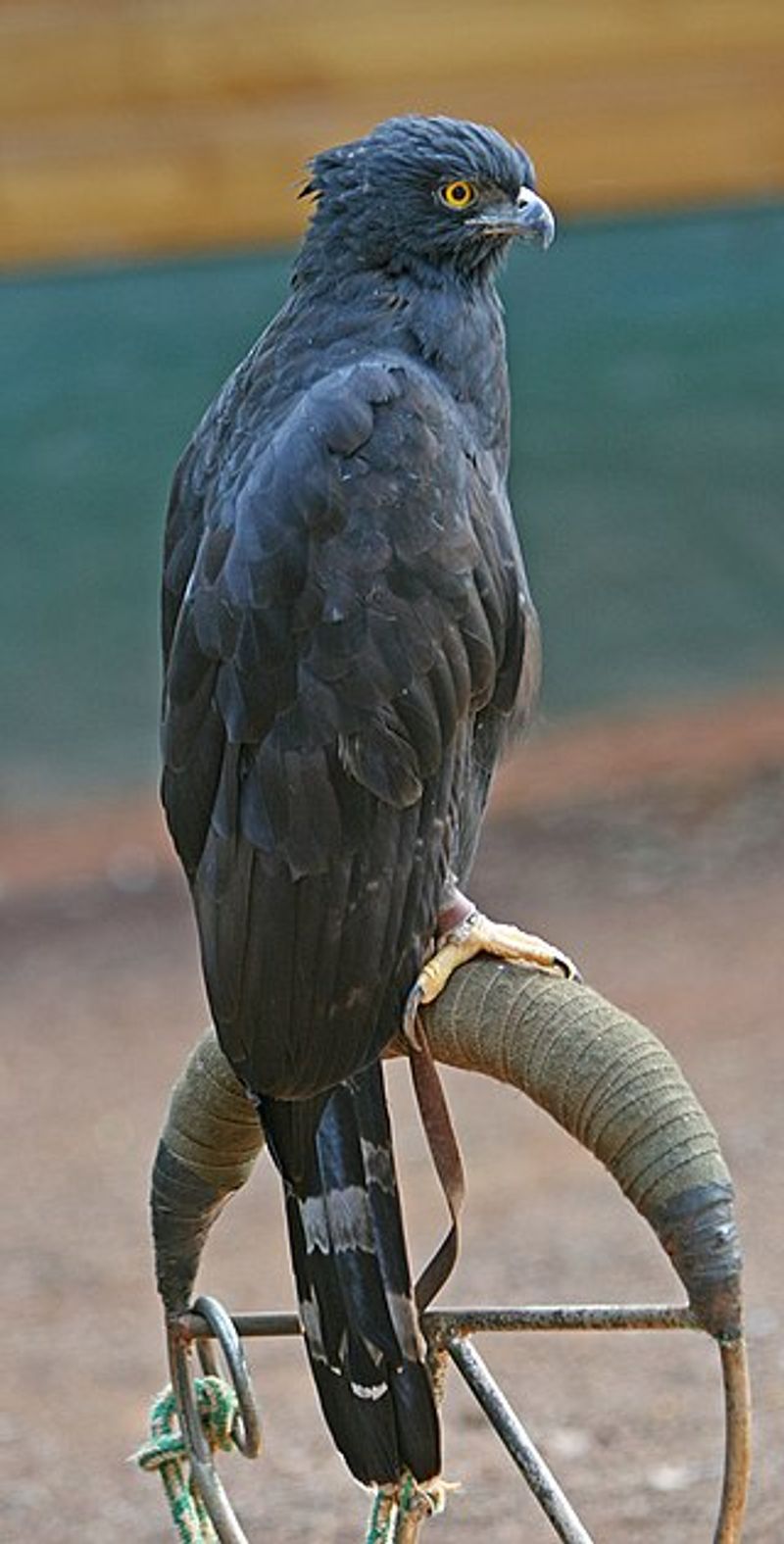
Spizaetus is a genus of birds of prey commonly known as hawk-eagles. This group of birds is found in tropical and subtropical areas of the Americas, from Mexico in the North to Argentina in the South.
The genus has also been used to refer to a wider group of tropical eagles that include species found in southern and southeastern Asia, and one representative of this genus in the rainforests of West Africa.
These birds have a wide range of habitats, ranging from mountain forests to marshlands and lowland forests. Their diet usually consists of rodents, reptiles, and sometimes small birds. Hawk eagles have a distinctive shape, with broad wings and a long tail.
They are powerful hunters and can be seen soaring high in the sky in search of prey. Hawk eagles are unique among birds of prey in that they build their nests in trees, rather than on cliffs, and they are well-known for their complex courtship displays.
| Kingdom | Animalia |
| Phylum | Chordata |
| Class | Aves |
| Order | Accipitriformes |
| Family | Accipitridae |
| Genus | Spizaetus |
13. Lesser Fish Eagle
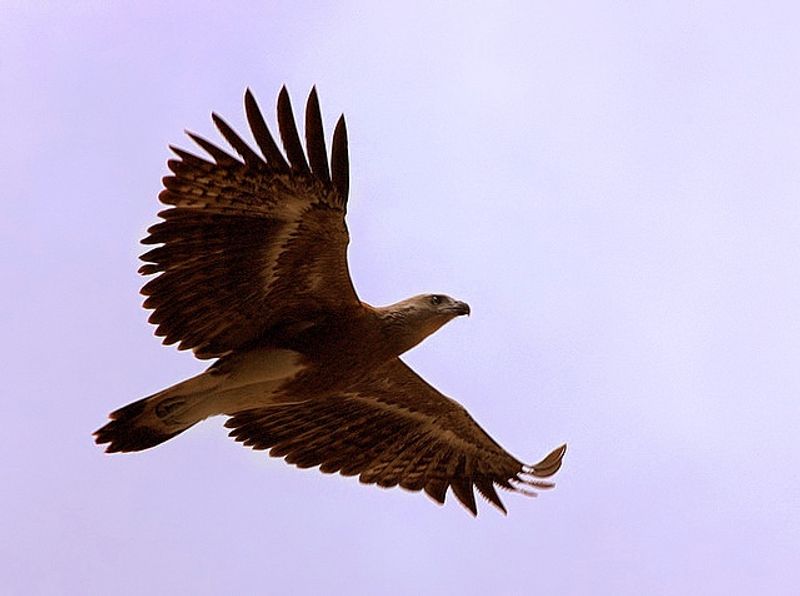
The lesser fish eagle (Icthyophaga) is a species of bird native to the Indian subcontinent, primarily found in the foothills of the Himalayas and southeast Asia. It is a medium-sized raptor that belongs to the family Accipitridae.
The wingspan of this species is between 75 and 85 cm, and the length of the body ranges from 55 to 65 cm. The body is dark brown, and the head is white. The tail is white with dark barring. The eyes are dark brown and have a yellow cere.
The bill is black and has a yellow cere. The lesser fish eagle is an opportunistic feeder. It feeds mostly on fish, but it also eats small mammals, reptiles, amphibians, and insects. It typically hunts from a perch, from which it will make a swooping dive to capture its prey.
It will also hunt from the air, hovering over the water and then swooping down to capture a fish or other small animal. The lesser fish eagle typically inhabits forests near rivers, lakes, and wetlands. It prefers shallow water bodies, where it can easily find its prey.
It is a solitary species and is usually seen alone or in pairs. Breeding takes place from October to April.
The nest is typically built on the fork of a large tree, and the female will lay two to three eggs. The lesser fish eagle is listed as a species of least concern on the IUCN Red List.
However, it is threatened by habitat loss and degradation due to deforestation and agricultural expansion in its range. Conservation efforts are needed to ensure the continued survival of this species.
| Kingdom | Animalia |
| Phylum | Chordata |
| Class | Aves |
| Order | Accipitriformes |
| Family | Accipitridae |
| Genus | Icthyophaga |
| Species | I. humilis |
14. White-bellied Sea Eagle
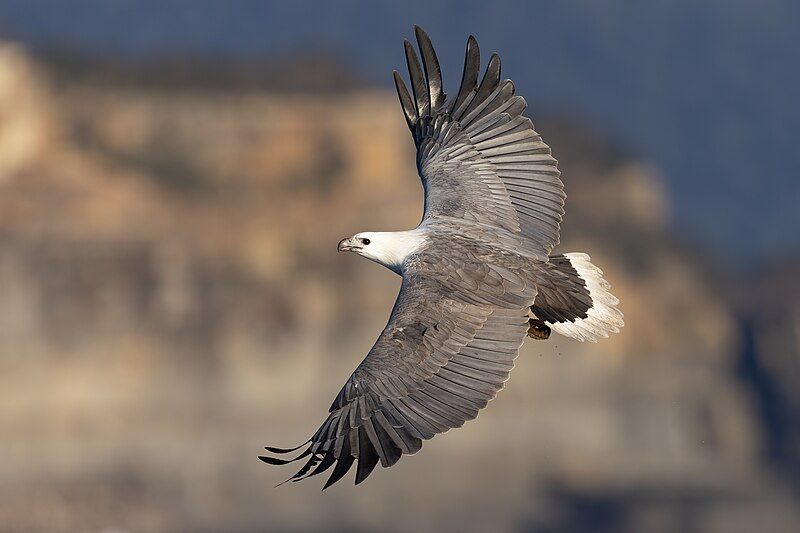
The white-bellied sea eagle, also known as the white-breasted sea eagle, is a large bird of prey belonging to the family Accipitridae. It is a diurnal species, meaning it is most active during the day.
First described in 1788 by Johann Friedrich Gmelin, it is closely related to Sanford’s sea eagle, which is found in the Solomon Islands.
In fact, the two birds are considered to be part of the same superspecies, which means that they are closely related and share many common traits.
The white-bellied sea eagle is found in much of South and Southeast Asia, including India, Bangladesh, Nepal, and Pakistan, and is usually found near coastal areas or large bodies of water.
It typically feeds on fish, which it catches by swooping down from the sky and snatching up its prey with its sharp talons. The white-bellied sea eagle is an impressive bird of prey, with a wingspan of up to 6 feet and a strong, powerful body.
Its white underside and brown back make it stand out among other birds of prey, and its loud call can be heard from miles away.
| Kingdom | Animalia |
| Phylum | Chordata |
| Class | Aves |
| Order | Accipitriformes |
| Family | Accipitridae |
| Genus | Icthyophaga |
| Species | I. leucogaster |
15. Grey-headed Fish Eagle
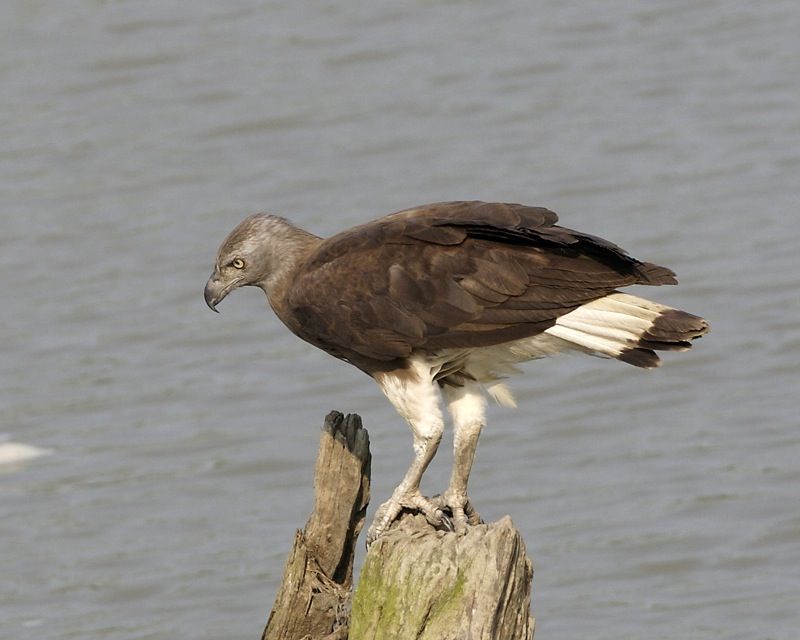
The grey-headed fish eagle is a large bird of prey found in Southeast Asia. It has a dark brown upper body, grey head, and light underbelly, with white legs. The juveniles of this species are paler in color with darker streaking.
This species is often confused with the lesser fish eagle and the Pallas’s fish eagle, due to the similarities in their physical appearance. The grey-headed fish eagle has a stocky body, with adults measuring up to 76 cm in height and 1.6 kg in weight.
They have a wingspan of 1.6 m and a tail length of about 33 cm. These birds are primarily fish-eaters but occasionally feed on small animals, amphibians, reptiles, and young birds.
They are usually seen near water sources such as rivers, lakes, and streams. The grey-headed fish eagle builds its nest in a tall tree, often near a water source. The nest is made of sticks and lined with green leaves. The female lays 1-2 eggs, which are incubated for 35-40 days.
The male takes care of the nest during this time, while the female goes off to hunt. Once the chicks hatch, they are cared for by both parents until they are able to fly. The grey-headed fish eagle is classified as a species of least concern by the IUCN.
It is estimated that there are over 10,000 mature individuals in the wild, with numbers increasing or stable in most parts of its range. A major threat to this species is habitat destruction, as well as hunting and fishing for their prey.
Conservation efforts are needed to ensure the future of this species.
| Kingdom | Animalia |
| Phylum | Chordata |
| Class | Aves |
| Order | Accipitriformes |
| Family | Accipitridae |
| Genus | Icthyophaga |
| Species | I. ichthyaetus |
Conclusion
North Sumatra is home to a diverse array of birds, including a number of endemic species. The region is an important stopover for migratory species, and it hosts a variety of habitats such as lowland and montane forests, wetlands, and open country.
These habitats provide essential resources for a wide range of bird species, making North Sumatra an important destination for birders and conservationists alike.